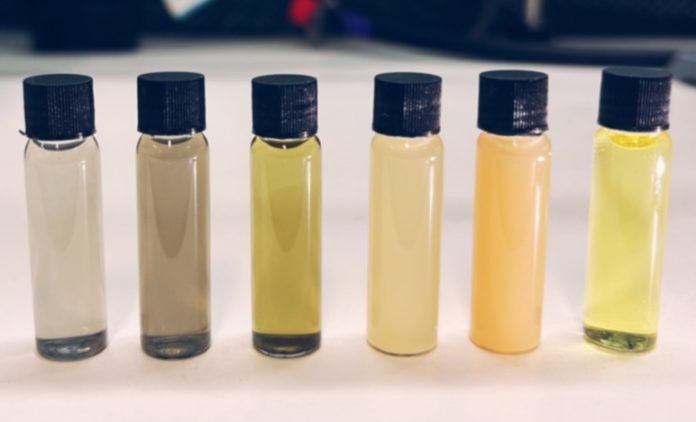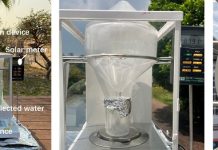
Scientists have created a new type of ink called ‘phase change inks’ that can help regulate temperatures in buildings, homes, and cars without using a lot of energy.
This ink works by controlling the amount of heat that can pass through it, based on the surrounding temperature.
This technology has the potential to significantly reduce energy use and greenhouse gas emissions.
The research was led by Dr. Mohammad Taha and was published in The Royal Society of Chemistry’s Journal of Materials Chemistry A.
The inks can be used to develop coatings that achieve passive heating and cooling, which means less energy is needed to maintain comfortable temperatures.
“Humans use a lot of energy to create and maintain comfortable environments – heating and cooling our buildings, homes, cars and even our bodies,” Dr Taha said.
“We can no longer only focus on energy generation from renewable resources to reduce our environmental impact. We also need to consider reducing our energy consumption as part of our proposed energy solutions, as the impacts of climate change become a reality.
“By engineering our inks to respond to their surroundings, we not only reduce the energy expenditure, but we also remove the need for auxiliary control systems to control temperatures, which is an additional energy waste.”
Passive climate control would enable comfortable living conditions without expending energy unnecessarily. For example, to provide comfortable heating in winter, the inks applied on a building façade could automatically transform to allow greater sun radiation to pass through during the day, and greater insulation to keep warmth in at night. In summer, they could transform to form a barrier to block heat radiation from the sun and the surrounding environment.
The versatile ‘phase change inks’ are a proof-of-concept that can be laminated, sprayed or added to paints and building materials. They could also be incorporated into clothing, regulating body temperature in extreme environments, or in the creation of large-scale, flexible and wearable electronic devices like bendable circuits, cameras and detectors, and gas and temperature sensors.
Dr Taha said: “Our research removes the previous restrictions on applying these inks on a large scale cheaply. It means existing structures and building materials can be retrofitted. With manufacturing interest, the inks could reach market in five to 10 years.
“Through collaboration with industry, we can scale up and integrate them into existing and new technologies as part of a holistic approach to tackling the world’s climate change energy challenges.
“The potential of this material is huge as it can be used for so many different purposes – like preventing heat build-up in laptop electronics or on car windshields. But the beauty of this material is that we can adjust its heat absorption properties to suit our needs.
“Already, a different type of phase change material is used to manufacture smart glass, but our new material means we can engineer smarter bricks and paint. This new nanotechnology can help retrofit existing buildings to make them more efficient. It’s better for the environment and sustainable for the future.”
The breakthrough was achieved by discovering how to modify one of the main components of ‘phase change materials’ – vanadium oxide (VO2). Phase change materials use triggers, like heat or electricity, to create enough energy for the material to transform itself under stress. However, phase change materials previously needed to be heated to very high temperatures for their ‘phase changing’ properties to be activated.
“We used our understanding of how these materials are put together to test how we could trigger the insulator to metal (IMT) reaction, where the material basically acts as a switch to block heat beyond a particular temperature – near-room temperature (30-40oC),” Dr Taha said.
Dr Taha said the next step will involve taking the research, patented by the University of Melbourne, to production.



